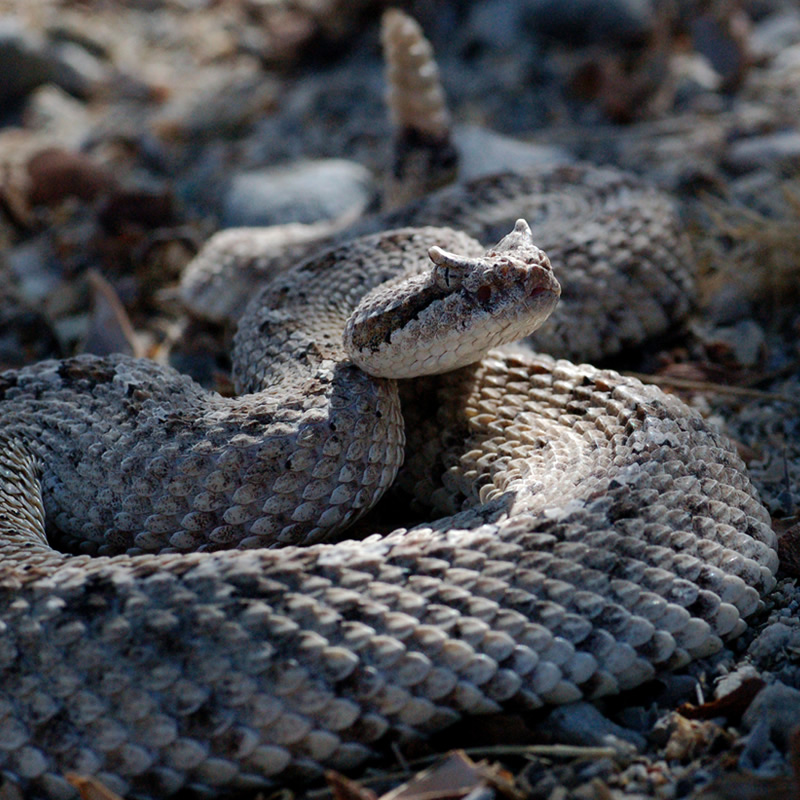
Located
There are three subspecies of Sidewinder Rattlesnake including the Mojave Sidewinder, the Colorado Sidewinder and the Sonoran Sidewinder. The three subspecies inhabit various parts of Arizona, Nevada, California, northern Mexico and Utah.
Diet
Like many other snakes the diet of the Sidewinder consists of small rodents such as the Kangaroo Rat and lizards. The Sidewinder uses venom to kill its prey. Though a bite is probably not lethal to humans due to its small size, the Sidewinder is poisonous and if bitten a person should seek professional medical attention immediately.
Habitat
The Sidewinder can often be found buried in the sand of the desert or in animal burrows. The Sidewinder will mostly be seen at night as it is primarily nocturnal.
Size and Description
The length of a Sidewinder can range from 1.5 to 2.5 feet, but Sidewinders of over 30 inches are rarely observed. A Sidewinder can be distinguished by the raised scales above its eyes creating a horn-like appearance. These structures are not horns however, and they may be an adaptation that help protect the snake's eyes. The color of the Sidewinder is pale to brown with small dark patches. This coloration allows the snake to blend in with the sand.
Reproduction
Up to 18 young can be born per litter, and the young are born in an embryonic membrane.
